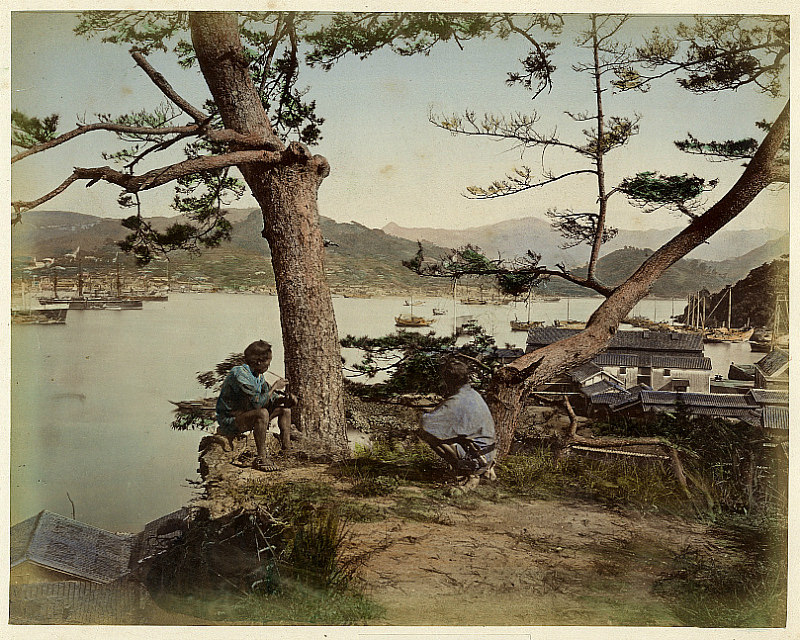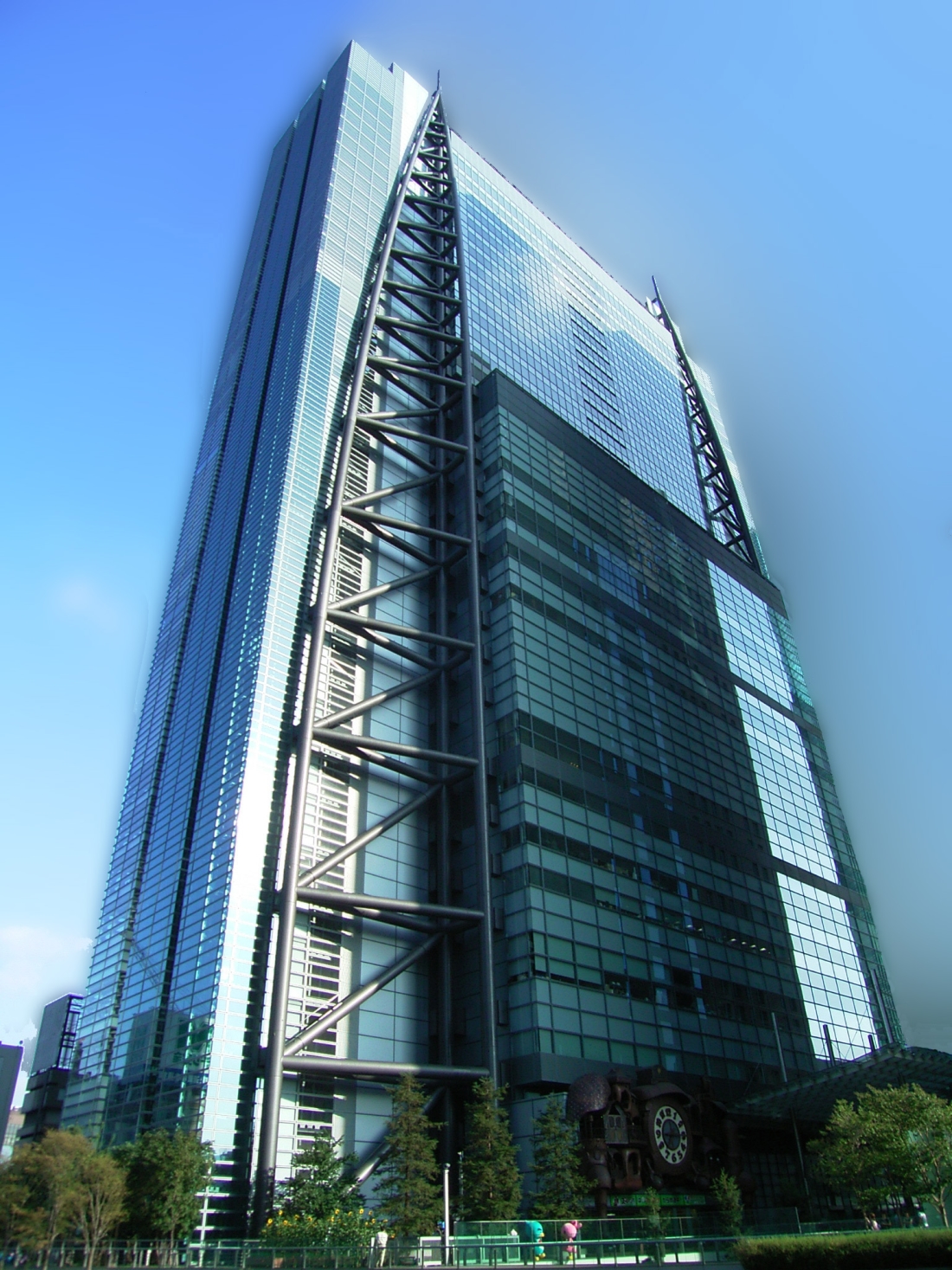|
Nagasaki International Television
, also known as NIB, is a television network headquartered in Nagasaki Prefecture, Japan. Nagasaki International Television is the fourth commercial television broadcaster in Nagasaki, it is affiliated with the Nippon News Network and the Nippon Television Network System. NTV Holdings and Fuji Media Holdings are the main shareholders of Nagasaki International Television. NIB founded in 1990, and started broadcasting 1991. In 2006, NIB started digital television broadcasting. The headquarter of NIB is located in Dejima , in the 17th century also called Tsukishima ( 築島, "built island"), was an artificial island off Nagasaki, Japan that served as a trading post for the Portuguese (1570–1639) and subsequently the Dutch (1641–1854). For 220 years, ..., its VOD service also named as DEJIMA ch. References External links Official website NIB TV NIB TV NIB TV Television channels and stations established in 1991 Mass media in Nagasaki Prefecture ... [...More Info...] [...Related Items...] OR: [Wikipedia] [Google] [Baidu] |
Nagasaki
is the capital and the largest city of Nagasaki Prefecture on the island of Kyushu in Japan. It became the sole port used for trade with the Portuguese and Dutch during the 16th through 19th centuries. The Hidden Christian Sites in the Nagasaki Region have been recognized and included in the UNESCO World Heritage List. Part of Nagasaki was home to a major Imperial Japanese Navy base during the First Sino-Japanese War and Russo-Japanese War. Near the end of World War II, the American atomic bombings of Hiroshima and Nagasaki made Nagasaki the second and, to date, last city in the world to experience a nuclear attack (at 11:02 am, August 9, 1945 'Japan Standard Time (UTC+9)'). , the city has an estimated population of 407,624 and a population density of 1,004 people per km2. The total area is . History Nagasaki as a Jesuit port of call The first contact with Portuguese explorers occurred in 1543. An early visitor was Fernão Mendes Pinto, who came from Sa ... [...More Info...] [...Related Items...] OR: [Wikipedia] [Google] [Baidu] |
Nagasaki Prefecture
is a prefecture of Japan located on the island of Kyūshū. Nagasaki Prefecture has a population of 1,314,078 (1 June 2020) and has a geographic area of 4,130 km2 (1,594 sq mi). Nagasaki Prefecture borders Saga Prefecture to the northeast. Nagasaki is the capital and largest city of Nagasaki Prefecture, with other major cities including Sasebo, Isahaya, and Ōmura. Nagasaki Prefecture is located in western Kyūshū with a territory consisting of many mainland peninsulas centered around Ōmura Bay, as well as islands and archipelagos including Tsushima and Iki in the Korea Strait and the Gotō Islands in the East China Sea. Nagasaki Prefecture is known for its century-long trading history with the Europeans and as the sole place of direct trade and exchange between Japan and the outside world during the ''Sakoku'' period. Nagasaki Prefecture is home to several of the Hidden Christian Sites in the Nagasaki Region which have been declared a UNESCO World Heritage Site. ... [...More Info...] [...Related Items...] OR: [Wikipedia] [Google] [Baidu] |
Nippon News Network
Nippon News Network (NNN) is a Japanese commercial television network owned by Nippon Television, which itself is controlled by the ''Yomiuri Shimbun The (lit. ''Reading-selling Newspaper'' or ''Selling by Reading Newspaper'') is a Japanese newspaper published in Tokyo, Osaka, Fukuoka, and other major Japanese cities. It is one of the five major newspapers in Japan; the other four are ...'' newspaper. The network's responsibility includes the syndication of national television news bulletins to its regional affiliates, and news exchange between the stations. NNN also operates NTV News24, a 24-hour news channel available on subscription television platforms and also aired on select NNN affiliates during overnights. Distribution of non-news television programmes is handled by Nippon Television Network System (NNS), another network set up by NTV. Stations Bold indicates founding members of Nippon News Network Former stations Bold indicates former primary affilia ... [...More Info...] [...Related Items...] OR: [Wikipedia] [Google] [Baidu] |
Nippon Television Network System
Nippon Television Network System (; NNS) is a Japanese television network organized by The Yomiuri Shimbun Holdings through its subsidiary NTV. NTV feeds entertainment and other non-news programming over NNS to 29 affiliated stations. Distribution of national television news bulletins is handled by Nippon News Network Nippon News Network (NNN) is a Japanese commercial television network owned by Nippon Television, which itself is controlled by the ''Yomiuri Shimbun The (lit. ''Reading-selling Newspaper'' or ''Selling by Reading Newspaper'') is a Ja ..., another network set up by NTV. Nippon News Network stations References External links Nippon TV Television networks in Japan Television channels and stations established in 1972 {{Japan-tv-station-stub ... [...More Info...] [...Related Items...] OR: [Wikipedia] [Google] [Baidu] |
Ministry Of Internal Affairs And Communications
The is a cabinet-level ministry in the Government of Japan. Its English name was Ministry of Public Management, Home Affairs, Posts and Telecommunications (MPHPT) prior to 2004. It is housed in the 2nd Building of the Central Common Government Office at 2-1-2 Kasumigaseki in Chiyoda, Tokyo, Japan. The Ministry oversees the Japanese administrative system, manages local governments, elections, telecommunication, post, and governmental statistics. The is appointed from among the members of the cabinet. History The Ministry was created on January 6, 2001, by the merger of the , the and the Management and Coordination Agency (総務庁). Certain functions of the Management and Coordination Agency were transferred to the Cabinet Office in this process, while many functions of the MPT were transferred to an independent Postal Services Agency which later became Japan Post. Subdivisions The Ministry has the following subdivisions as of July 2011: Bureaus *Minister's Secretariat ( ... [...More Info...] [...Related Items...] OR: [Wikipedia] [Google] [Baidu] |
Television Network
A television network or television broadcaster is a telecommunications network for distribution of television program content, where a central operation provides programming to many television stations or pay television providers. Until the mid-1980s, television programming in most countries of the world was dominated by a small number of terrestrial networks. Many early television networks (such as NBC, the ABC, or the BBC) evolved from earlier radio networks. Overview In countries where most networks broadcast identical, centrally originated content to all of their stations and where most individual television transmitters therefore operate only as large " repeater stations", the terms "television network", "television channel" (a numeric identifier or radio frequency) and "television station" have become mostly interchangeable in everyday language, with professionals in television-related occupations continuing to make a differentiation between them. Within the industry, ... [...More Info...] [...Related Items...] OR: [Wikipedia] [Google] [Baidu] |
Japan
Japan ( ja, 日本, or , and formally , ''Nihonkoku'') is an island country in East Asia. It is situated in the northwest Pacific Ocean, and is bordered on the west by the Sea of Japan, while extending from the Sea of Okhotsk in the north toward the East China Sea, Philippine Sea, and Taiwan in the south. Japan is a part of the Ring of Fire, and spans an archipelago of 6852 islands covering ; the five main islands are Hokkaido, Honshu (the "mainland"), Shikoku, Kyushu, and Okinawa. Tokyo is the nation's capital and largest city, followed by Yokohama, Osaka, Nagoya, Sapporo, Fukuoka, Kobe, and Kyoto. Japan is the eleventh most populous country in the world, as well as one of the most densely populated and urbanized. About three-fourths of the country's terrain is mountainous, concentrating its population of 123.2 million on narrow coastal plains. Japan is divided into 47 administrative prefectures and eight traditional regions. The Greater Tokyo Ar ... [...More Info...] [...Related Items...] OR: [Wikipedia] [Google] [Baidu] |
Dejima
, in the 17th century also called Tsukishima ( 築島, "built island"), was an artificial island off Nagasaki, Japan that served as a trading post for the Portuguese (1570–1639) and subsequently the Dutch (1641–1854). For 220 years, it was the central conduit for foreign trade and cultural exchange with Japan during the isolationist Edo period (1600–1869), and the only Japanese territory open to Westerners. Spanning or , Dejima was created in 1636 by digging a canal through a small peninsula and linking it to the mainland with a small bridge. The island was constructed by the Tokugawa shogunate, whose isolationist policies sought to preserve the existing sociopolitical order by forbidding outsiders from entering Japan while prohibiting most Japanese from leaving. Dejima would house Portuguese merchants and separate them from Japanese society while still facilitating lucrative trade with the West. Following a rebellion by mostly Catholic converts, all Portugues ... [...More Info...] [...Related Items...] OR: [Wikipedia] [Google] [Baidu] |
Television Stations In Japan
Television, sometimes shortened to TV, is a telecommunication medium for transmitting moving images and sound. The term can refer to a television set, or the medium of television transmission. Television is a mass medium for advertising, entertainment, news, and sports. Television became available in crude experimental forms in the late 1920s, but only after several years of further development was the new technology marketed to consumers. After World War II, an improved form of black-and-white television broadcasting became popular in the United Kingdom and the United States, and television sets became commonplace in homes, businesses, and institutions. During the 1950s, television was the primary medium for influencing public opinion.Diggs-Brown, Barbara (2011''Strategic Public Relations: Audience Focused Practice''p. 48 In the mid-1960s, color broadcasting was introduced in the U.S. and most other developed countries. The availability of various types of archival storag ... [...More Info...] [...Related Items...] OR: [Wikipedia] [Google] [Baidu] |
Companies Based In Nagasaki Prefecture
A company, abbreviated as co., is a legal entity representing an association of people, whether natural, legal or a mixture of both, with a specific objective. Company members share a common purpose and unite to achieve specific, declared goals. Companies take various forms, such as: * voluntary associations, which may include nonprofit organizations * business entities, whose aim is generating profit * financial entities and banks * programs or educational institutions A company can be created as a legal person so that the company itself has limited liability as members perform or fail to discharge their duty according to the publicly declared incorporation, or published policy. When a company closes, it may need to be liquidated to avoid further legal obligations. Companies may associate and collectively register themselves as new companies; the resulting entities are often known as corporate groups. Meanings and definitions A company can be defined as an "artificial pe ... [...More Info...] [...Related Items...] OR: [Wikipedia] [Google] [Baidu] |
Television Channels And Stations Established In 1991
Television, sometimes shortened to TV, is a telecommunication medium for transmitting moving images and sound. The term can refer to a television set, or the medium of television transmission. Television is a mass medium for advertising, entertainment, news, and sports. Television became available in crude experimental forms in the late 1920s, but only after several years of further development was the new technology marketed to consumers. After World War II, an improved form of black-and-white television broadcasting became popular in the United Kingdom and the United States, and television sets became commonplace in homes, businesses, and institutions. During the 1950s, television was the primary medium for influencing public opinion.Diggs-Brown, Barbara (2011''Strategic Public Relations: Audience Focused Practice''p. 48 In the mid-1960s, color broadcasting was introduced in the U.S. and most other developed countries. The availability of various types of archival stor ... [...More Info...] [...Related Items...] OR: [Wikipedia] [Google] [Baidu] |


.png)




